Rough seas: Alarming trend of US Navy ships involved in collisions in 2017

US Navy warships were involved in four major accidents this year, more than any other year since the turn of the century. The Chief of Naval Operations (CNO) Admiral John Richardson has ordered an "operational pause" and a probe of all fleet activity.
The "trend” of incidents demands a forceful action, Richardson said on Monday, as the Navy paused operations in all US fleets following the collision of the guided missile destroyer USS John S McCain with a merchant ship off Singapore.
US destroyer USS John S McCain collides with oil tanker off Singapore https://t.co/VOfSklP4Tupic.twitter.com/BizPVdEMhT
— RT (@RT_com) August 21, 2017
“This is the second collision in three months, and the last in a series of incidents in the Pacific theater,” Richardson stated.
The stand-down will be accompanied by a review of fleet operations to see why the spike in US warship collisions.
USS John McCain, August 2017
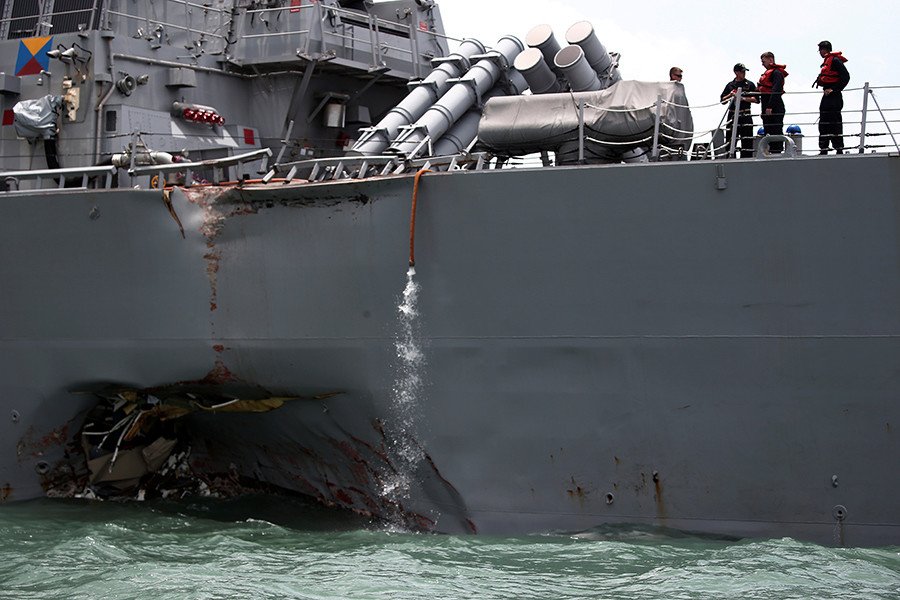
The guided-missile destroyer USS John S. McCain collided with a commercial oil tanker east of Singapore early Monday. Ten US soldiers were reported missing, while five were injured.
The collision caused a significant hull damage, with flooding in berthing compartments as well as machinery and communication rooms, the Navy said.
USS Fitzgerald, June 2017

The guided-missile destroyer USS Fitzgerald collided with a container ship off the coast of Japan in June. Seven sailors died in the accident.
About 35 sailors were in the sleeping area when the cargo ship’s bow tore a hole in the side of the Fitzgerald, causing the compartment to flood.
Top two Navy officers booted from service after fallout from #USSFitzgerald crash near Japan https://t.co/jzRJiE6ql5pic.twitter.com/aIu2nIK8lL
— RT America (@RT_America) August 18, 2017
The ship’s commander and executive officer were relieved from duty as a result of the probe into the collision. Under international rules of navigation, the Fitzgerald should have yielded to the cargo ship, according to US officials.
“Clearly at some point, the bridge team lost situational awareness,” deputy chief of naval operations Admiral Bill Moran said last week.
USS Champlain, May 2017
US warship & S. Korean fishing boat collide in Sea of Japan https://t.co/VgEZHhs06g
— RT (@RT_com) May 9, 2017
The guided-missile cruiser USS Champlain collided with a South Korean fishing boat while conducting operations near the Korean Peninsula in May. No one was injured.
USS Antietam, January 2017
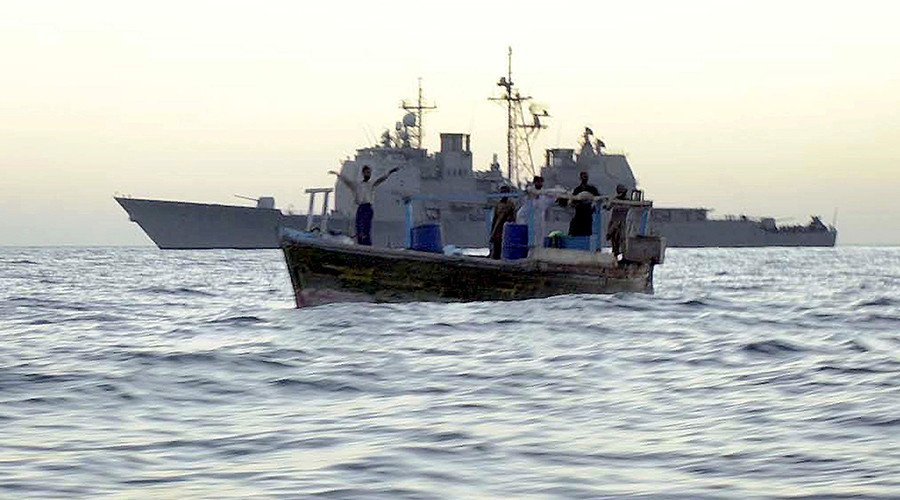
Another guided-missile cruiser, the USS Antietam, ran aground in late January in Tokyo Bay.
Although the incident did not result in any injuries, the ship spilled up to 1,100 gallons of hydraulic oil into the water off the coast of Japan, prompting environmental concerns.
USS Porter, August 2012
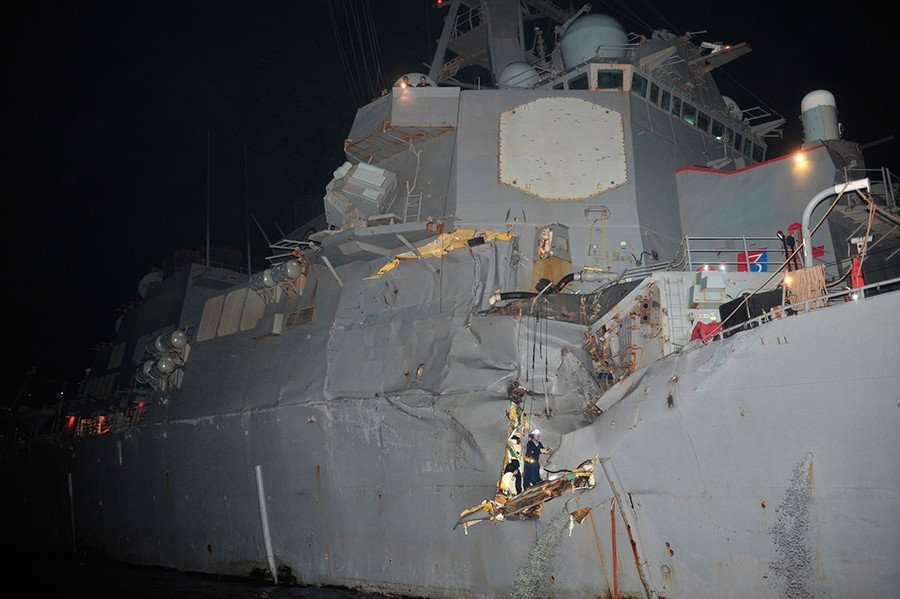
In August 2012, the guided missile destroyer USS Porter collided with an oil tanker in the Straits of Hormuz, which connect the Persian Gulf with the Arabian Sea.
An investigation by the Navy later found that the Porter lost focus on her course, and that her commander did not order the ship to turn fast enough. He was relieved from his duties.
USS John F. Kennedy, July 2004
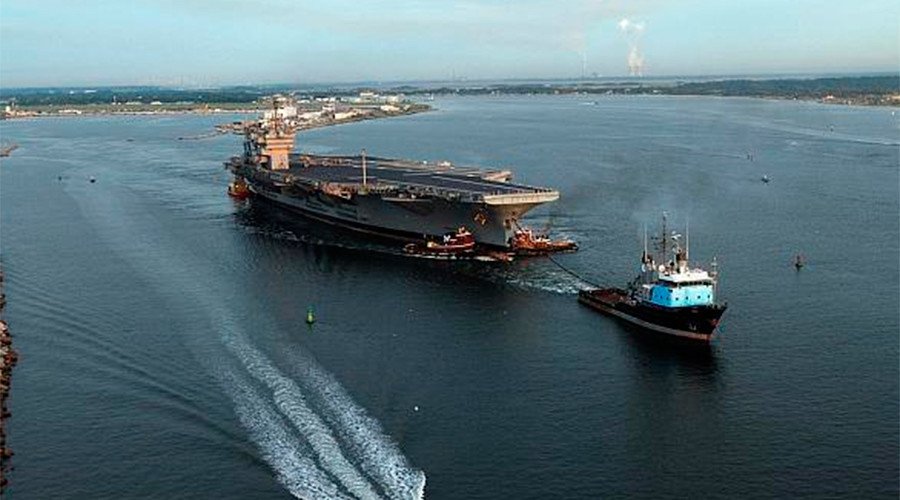
The nuclear-powered aircraft carrier USS John F. Kennedy collided with a small local fishing boat in the Persian Gulf in July 2004.
There were no survivors from the boat, while no one on the warship was injured.
The Kennedy's commanding officer was relieved from his duties following an investigation into the incident.
USS Denver, July 2000
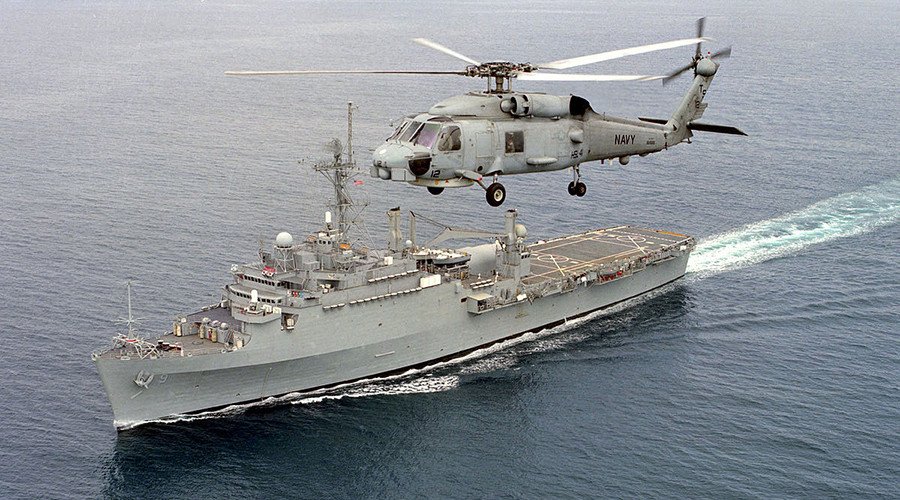
The amphibious transport dock USS Denver collided with a replenishment oiler Yukon, during a refueling exercise west of Hawaii.
An investigation found the Denver at fault, citing human error. Despite significant damage to both ships, no injuries were reported.












